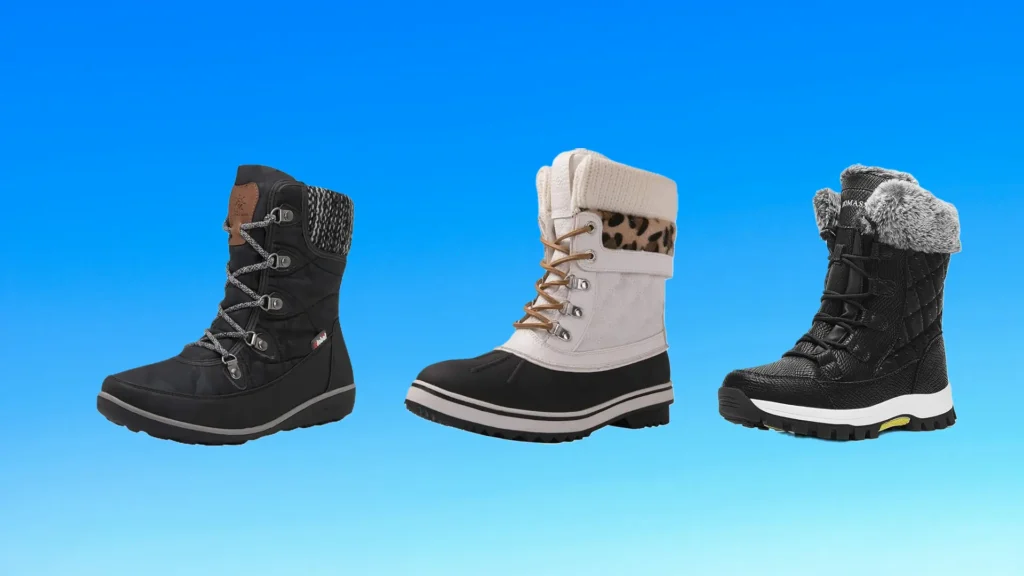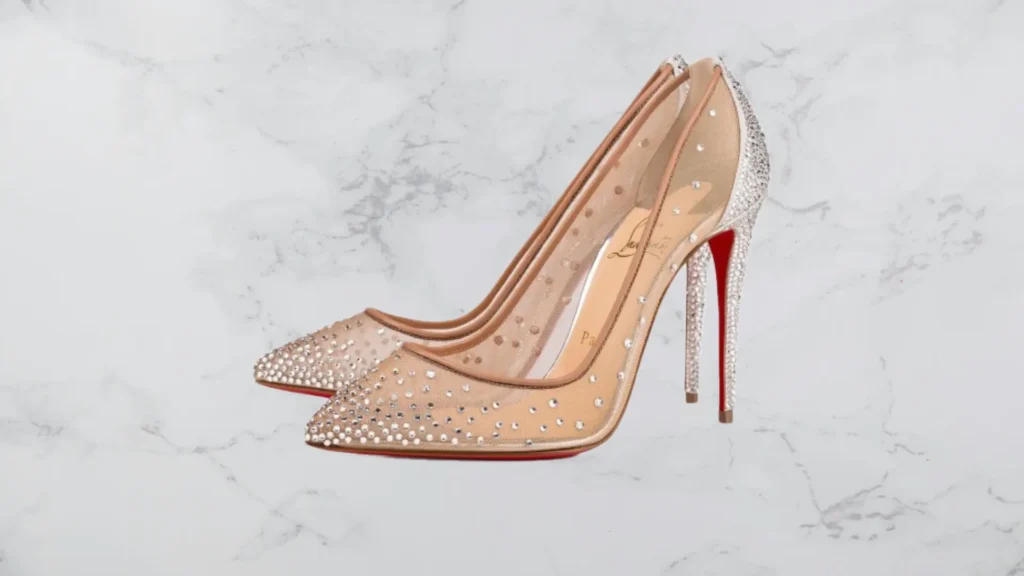Winter boots are your first line of defense against snow, ice, and bone-chilling cold. Picking the right pair means the difference between trudging through the season in misery and stepping out with confidence. By focusing on your environment, needs, and preferences, you can find boots that fit like a glove and perform like a champ.
Why You Need Winter Boots
Your regular sneakers might get you through spring and fall, but they’re no match for winter’s challenges. Here’s why you need a solid pair to tackle the cold months ahead.
Winter throws a lot at your feet: snowstorms, and biting winds. Without proper footwear, moisture seeps in, and cold air creeps through thin soles. Winter boots are built to fight back.
Waterproof materials in winter boots keep your feet dry, while insulated linings trap heat to fend off frost.
Icy sidewalks and snow-covered paths are accidents waiting to happen. Winter boots come with grippy rubber outsoles and deep lugs that dig into slick terrain. They offer traction where sneakers skid. Specialized tech like Vibram and Arctic Grip takes it further, gripping ice like glue.
Cold feet aren’t just uncomfortable—they’re a health risk. Prolonged exposure to low temperatures numb toes. Winter boots provide a thermal barrier
Salt-stained streets, jagged ice, and abrasive snow chew up everyday footwear fast. Winter boots are tougher, with full-grain leather and reinforced rubber that stand up to the season’s abuse.
Winter often means more time on your feet—shoveling driveways, hiking trails, and waiting at icy bus stops. Thin soles and tight fits don’t cut it.
Winter boots offer cushioned support and room for thick socks. They keep you comfortable through hours of cold exposure. Their sturdy build also stabilizes your step on uneven ground.
Here’s a comprehensive, step-by-step guide to help you choose winter shoes.
Assess Your Winter Environment
Your local weather and terrain set the stage for your boot selection. Start by evaluating your surroundings with these questions in mind:
Where will you wear them?
If you’re navigating a bustling city with shoveled sidewalks and salted streets, you’ll need winter boots. Urban environments favor lighter, stylish options.
Conversely, if you’re in a rural area or tackling backcountry trails, you’ll face deeper snow, uneven ground, and less predictable conditions. These conditions require taller, tougher boots with enhanced protection.
How cold does it get?
Temperature dictates insulation needs. In a mild winter where lows hover around -5°C (23°F), you can get by with thinner linings and moderate insulation (e.g., 200g).
But in extreme climates dipping to -20°C (-4°F) or below, you’ll want heavily insulated boots (400g or more) to prevent frostbite and keep toes toasty during prolonged exposure.
How much precipitation?
Wet winters—whether from rain, sleet, and melting snow—demand robust waterproofing. If you’re slogging through slush daily, prioritize boots with sealed seams and impermeable materials.
In drier, powdery snow regions, breathability might take precedence over total water resistance.
Prioritize Key Features
Winter boots come with a dizzying array of specs. Focusing on these core features ensures you’re covered where it counts:
Insulation
This is your warmth lifeline. Insulation is rated in grams. This indicates the thickness of fibers.
For mild winters or short stints outdoors, 200g provides sufficient heat. In brutal cold or if you’re standing still for long periods (think ice fishing or waiting for a bus), 400g and higher traps more air to keep frost at bay.
Natural options like shearling and wool linings offer a plush, breathable alternative. Match insulation to your activity and climate. Too much can leave you sweaty, too little can leave you shivering.
Waterproofing
Wet feet in winter are a recipe for misery. Look for boots made with waterproof materials like treated leather, Gore-Tex linings, and synthetic membranes. These materials block moisture and allow vapor to escape.
Seam-sealed construction is a must. Unsealed stitches are entry points for water. Test this by checking product labels and reviews.
A waterproof shoe does not let any water in and will withstand the weather. Water-resistant shoes are perfect for drier conditions. Water-resistant materials are usually made from a tightly woven fabric that’s harder for water to get through and penetrate.
Traction
Icy patches and slick sidewalks are winter’s hidden hazards. A quality outsole should have deep, multidirectional lugs to grip slippery surfaces. Advanced technologies like Vibram and Omni-Grip enhance traction on ice and wet ground.
If you can, test boots by walking on a smooth floor—slipping there signals trouble outdoors. For extreme ice, consider boots compatible with add-on crampons.
Height
Boot height affects protection and mobility. Ankle boots (around 5-7 inches) are lightweight and great for cleared paths and mild weather. But they leave calves exposed in deep snow.
Mid-calf boots (8-12 inches) shield more leg and suit moderate snowfalls, while knee-high models (13+ inches) excel in drifts. Taller boots feel restrictive, so weigh convenience against coverage.
Closure System
How boots fasten impacts fit and ease of use. Lace-ups allow precise adjustments, hugging your foot. They are ideal for uneven terrain.
But wet laces can freeze or soak, slowing you down. Slip-on styles and zippers offer quick entry. They are perfect for frequent on-and-off wear. Choose based on your patience and conditions—laces for hiking, slip-ons for errands.
Ensure Proper Fit
Even the best features flop if the fit’s off. Here’s how to nail it.
Winter calls for thicker socks. Think wool and thermal blends to boost warmth and cushioning. Buy boots a half-size larger than your usual shoes to accommodate them.
Too snug, and your feet lose circulation; too loose, and you’ll blister. Try them on with your intended socks to confirm.
Cold feet hate confinement. You should have enough space to wiggle your toes freely. This keeps blood flowing and traps warm air. Press your thumb at the toe box; about a finger’s width of space is ideal. Cramped toes not only hurt—they freeze faster.
New boots can be stiff as boards. Wear them indoors for a few hours over several days to soften the material and mold them to your feet. This prevents painful rubbing on your first real outing.
Match Your Activity Level

Your boots should align with how you move through winter.
If you’re hopping from car to office, prioritize lightweight boots with waterproofing and moderate insulation. A sleek design slips into professional settings without screaming snow gear.
Shoveling driveways demands durability. Consider aggressive traction, high insulation, and ankle support to handle uneven loads. Columbia Bugaboot Celsius Plus are built for rugged use.
For coffee runs and park strolls, versatility is key. Opt for boots with basic weather protection and a style that pairs with jeans and leggings.
Consider Style
Winter boots don’t have to be an eyesore.
Black, brown, gray, and taupe blend effortlessly with most winter outfits, from puffy coats to tailored wool jackets. For a standout vibe, try red, olive or metallic finishes to catch the eye against dreary skies.
Small touches elevate the aesthetic. Faux-fur cuffs add cozy flair, quilted patterns bring texture, and polished leather offers sophistication. Pick details that vibe with your wardrobe.
Slimmer profiles suit urban and dressier looks. Choose ankle boots with tights and trousers. Chunkier, rugged designs lean into outdoor aesthetics. They pair well with parkas and denim.
Test Durability and Brand Reputation
A boot’s lifespan matters.
Full-grain leather outlasts cheap synthetics. Rubber toe caps and heels fend off scuffs and cracks. Avoid flimsy linings that shred after a season.
Sorel and Columbia back their boots with warranties against manufacturing flaws. Check the fine print for peace of mind.
Dig into reviews on retailer sites, forums, and social platforms. Do seams leak after a month? Do soles wear thin on pavement? Real-world wear reveals what marketing glosses over.
Along with this, pair boots with moisture-wicking socks like merino wool and synthetic blends. Cotton socks hold sweat, chilling your feet. Layer smartly for maximum warmth.
Extend boot life with care. Spray leather with waterproofer before use. Wipe off salt stains with a damp cloth. Air-dry away from radiators.
Choosing winter boots is a personal puzzle. Piece together your climate, routine, and taste to solve it. Take your time, weigh the options, and invest in a pair that feels like a trusty sidekick. With the right boots, winter transforms from a slog into a season you can stride through.




